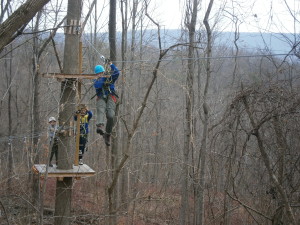The author recently read an article about a commercial outdoor recreation organization where the author expressed some concern about the number of participant deaths that had been experienced by that organization since its inception.
In the “comment section” to the article, a reader commented that, given the number of participants in the organization’s programs over the years, the odds of a participant suffering a tragic death were small indeed. However, the number of participant deaths was a real number, and a corresponding number of families suffered accordingly, as they did not “beat the odds”.
The author’s research confirms that the reported number of participant deaths which have occurred during BSA program activities over the past twenty years significantly exceeds the number of deaths experienced by participants in the above-discussed organization over a longer period of time. Indeed, the author is aware of at least 8 youth and adult Scouting deaths from May to November, 2016. What are we to make of this?
 For one, youth participants who suffer an untimely death during a Scout activity are generally much younger, less experienced, and less mature (and possibly less skilled) than participants in commercial outdoor recreation organizations, whose clientele is generally at least of young adult age. (The lack of experience in outdoor activities similarly applies to adult volunteers).
For one, youth participants who suffer an untimely death during a Scout activity are generally much younger, less experienced, and less mature (and possibly less skilled) than participants in commercial outdoor recreation organizations, whose clientele is generally at least of young adult age. (The lack of experience in outdoor activities similarly applies to adult volunteers).
This also means that, for any activity having significant risk, Scout participants are not old enough to legally assume the risk of that activity – they have to rely on their parents for that decision.
Secondly, while the real number of participant deaths may be higher for Scouting activities, given the number of participants and program days involved, the odds of a participant suffering an untimely death in Scouting may be lower than the other organization’s.
However, this is no solace to any Scouting family who loses a member (youth or adult) during a Scouting activity – indeed, any number of untimely deaths during Scouting activities is too many, particularly given the fact that youthful participants are involved (there is clearly a difference between a number that is statistically insignificant, and one that is morally indefensible).
No Scouting participant should suffer a serious injury or worse during a Scouting activity merely because of the luck of the draw as to which adult volunteers plan and carry out the outdoor activity. But, the stories on the web suggest that this may sometimes be the case. Hence, the need for fully trained, technically skilled, and experienced adult leaders.
Further, as opposed to participants in commercial outdoor recreation organizations who pay a fee to enroll in an activity, and hence generally have little prior connection to the program or its staff, the exact opposite is true in Scouting. Hence, any injury (or worse) suffered by a participant during a Scout program activity may have long-lasting emotional and psychological effect on volunteer leaders who generally have a prior personal relationship with both the participant and the participant’s family.
Indeed, few if any of us have an “emotional bank account” large enough to “pay the bills” which result from a serious injury to a participant (adult or youth) during an outdoor activity.
A volunteer leader reportedly stated after one of his Scouts suffered a serious injury during an outing that he wished he “had a do-over”.
Unfortunately, we can’t go back in time to correct deficiencies in judgment, lack of foresight, lack of qualified supervision, lack of training, lack of skill level, lack of preparation, or correct that split-second decision.
In a recently-published book titled “Do No Harm” (by English neurosurgeon Henry Marsh), the point is made by Dr. Marsh that there can sometimes “be a long distance between the tightrope on which he is practicing, and the ground below” (patient outcome), recognizing that “every day he makes decisions, that if wrong, may have terrible consequences for a patient”. That is, the surgeon finds himself “walking the tightrope” of doing his job competently on the one hand, and avoiding a bad outcome for the patient on the other. Dr. Marsh makes the further observation that, even if an operation has only a 5% chance of a bad outcome, a bad surgical outcome becomes a 100% bad outcome for that patient.
The same applies to Scouting activities, as we adult leaders attempt to provide a catastrophic end result-free outdoor program for our youth, as we “walk our own tightrope” of planning and conducting an outdoor program without serious consequence to the participants.
Safe Scouting!

